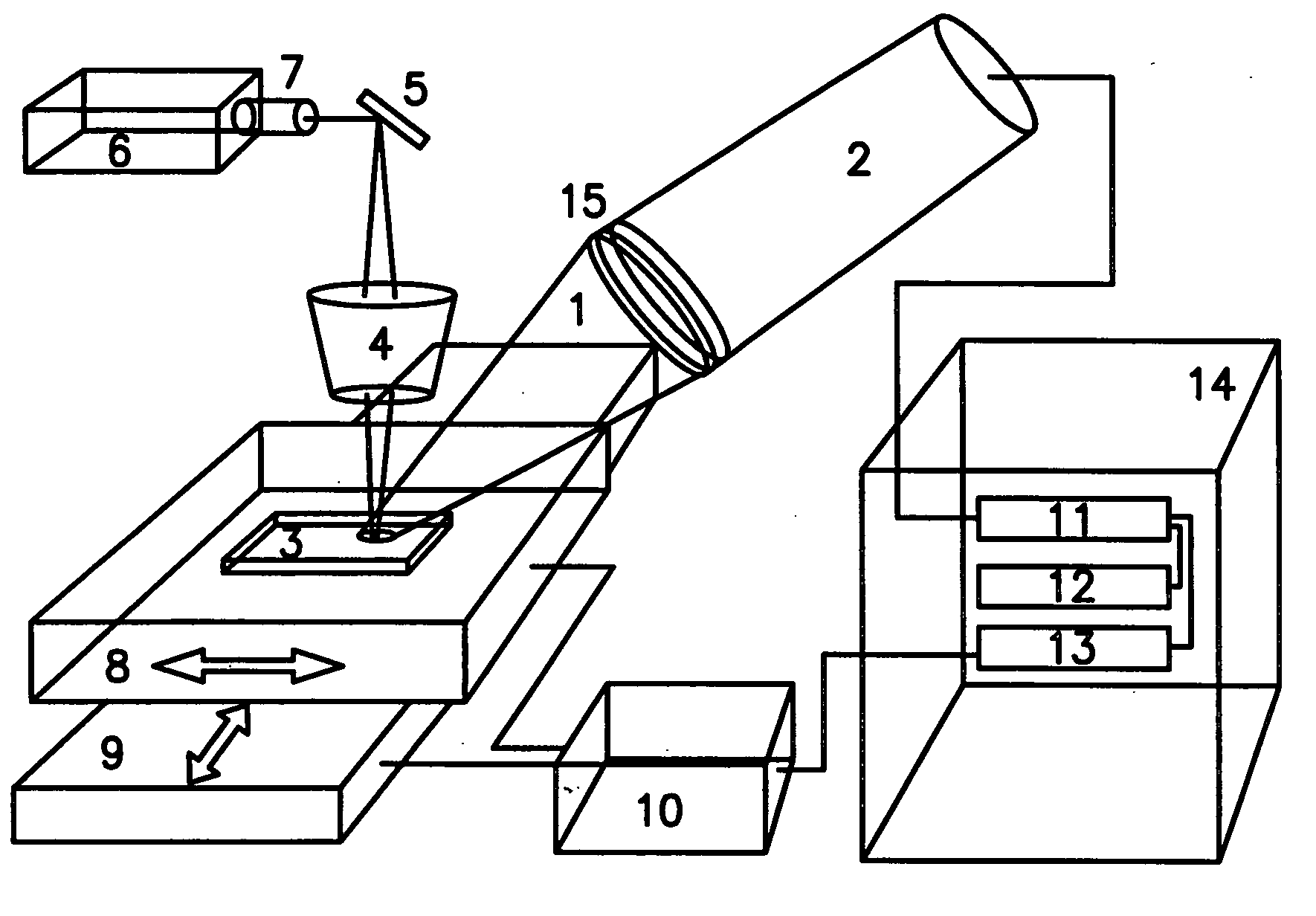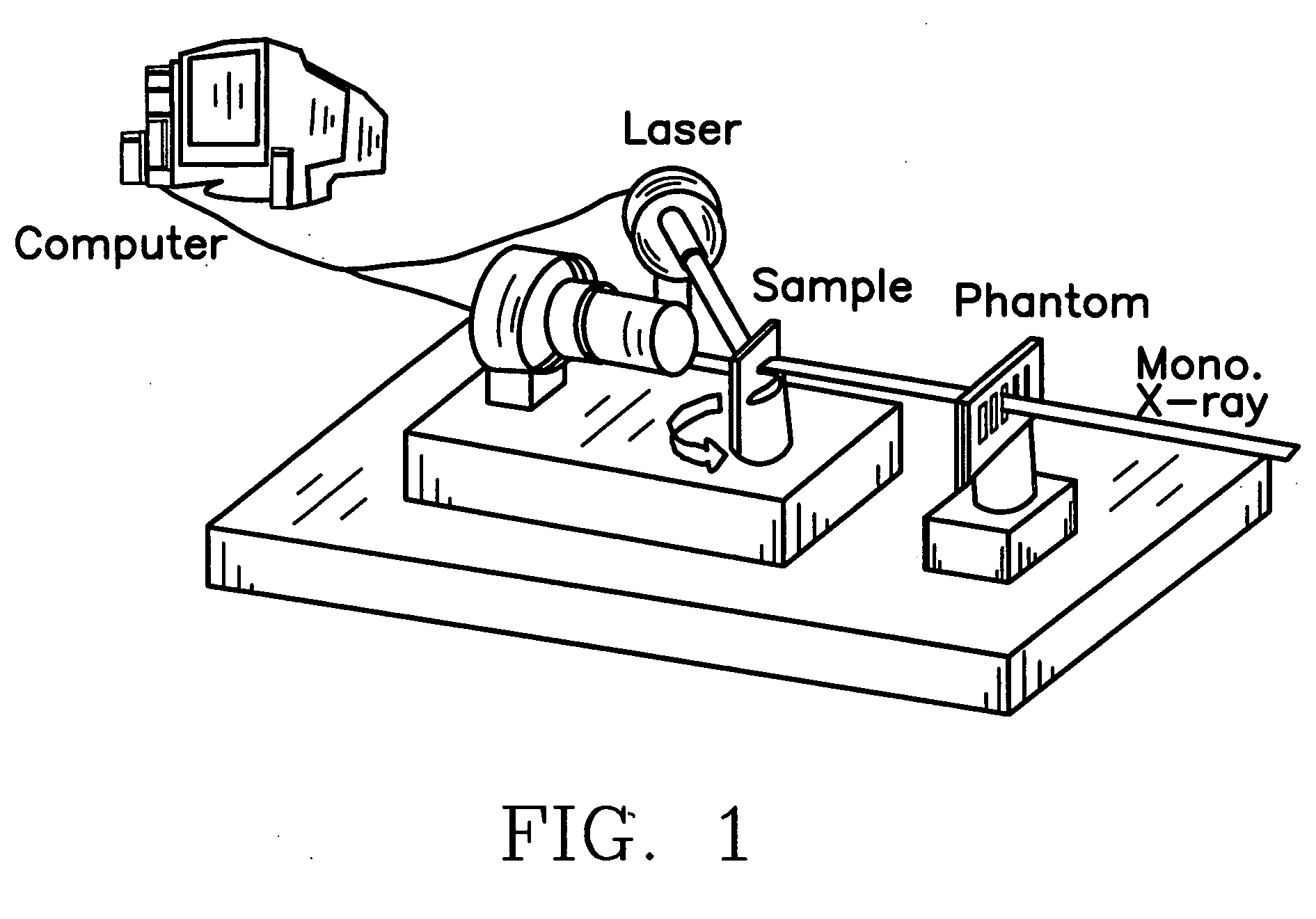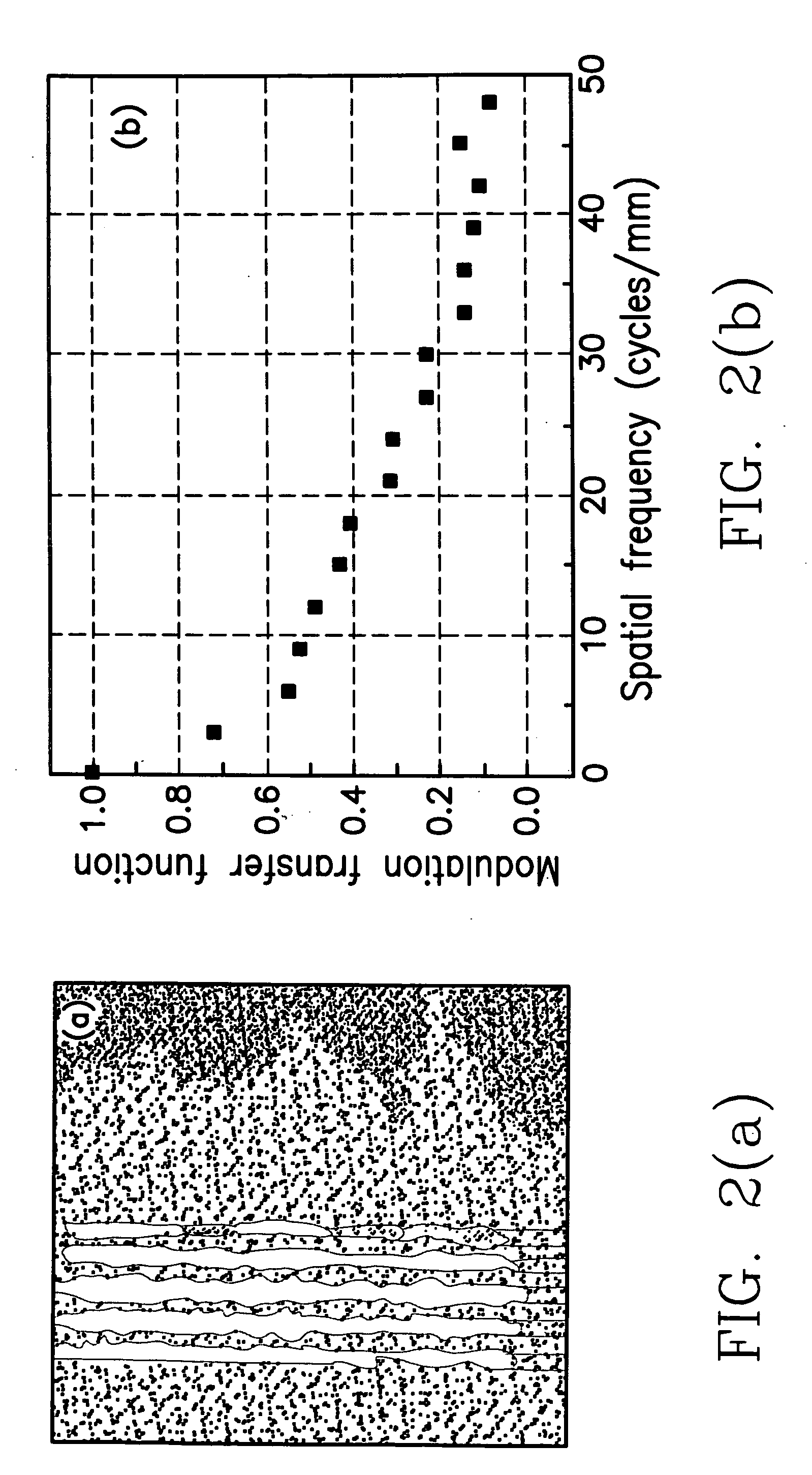Computed radiography system for mammography
a computed radiography and mammography technology, applied in the field of mammography, can solve the problems of limited clinical acceptance, high cost of dr detector replacement, and high cost of cr cassette replacement, so as to maximize x-ray absorption, improve the thickness of imaging plate, and facilitate the effect of dispersion
- Summary
- Abstract
- Description
- Claims
- Application Information
AI Technical Summary
Benefits of technology
Problems solved by technology
Method used
Image
Examples
first embodiment
[0081]Referring to FIG. 11, the inventive system is shown. It is in the form of a portable, self-contained device, in a light-tight box shown in dotted line. Exposed photostimulable plates (3) are read out using the light from source (6), which may be a laser source. The stimulating light passes through a beam expander (7) and reflects from a folding mirror (5). The stimulating light beam is focused to the desired beam size at the imaging plate surface by the objective lens (4). The stimulating beam enters the imaging plate (3) in a direction perpendicular to the plate surface.
[0082]The stimulating beam, upon entering the imaging plate, stimulated stored electrons and holes to recombine, producing photostimulated luminescence light, which has a wavelength different from that of the stimulating slight. This light is collected by the light collector (1) and is directed towards a light detector (2). Before entering the detector (2), the light passes through an optical filter, such as t...
second embodiment
[0084]Referring to FIG. 12, the present invention is shown. It is in the form of a portable, self-contained device, in a light-tight box shown in dotted line. Exposed photostimulable plates (23) are read out using the light from source (27), which may be a laser source. The stimulating light passes through a beam expander (28) and reflects from galvanometer-driven rotating mirror (29), which comprises the light scanning element. The light beam reflected from the rotating mirror (29) then passes through the telecentric lens (24). The telecentric lens (24) must be equal or longer in length than the length of the scan line in the x direction. Lens (24) is telecentric in the image space, so that the principal rays emerge parallel to the optic axis, and thus enter the image plate (23) in a direction perpendicular to the plate surface. Lens (24) is further designed such that the stimulating beam is focused to a desired size at the plate surface, e.g. between 50 and 100 microns, for a 50 m...
PUM
 Login to View More
Login to View More Abstract
Description
Claims
Application Information
 Login to View More
Login to View More - R&D
- Intellectual Property
- Life Sciences
- Materials
- Tech Scout
- Unparalleled Data Quality
- Higher Quality Content
- 60% Fewer Hallucinations
Browse by: Latest US Patents, China's latest patents, Technical Efficacy Thesaurus, Application Domain, Technology Topic, Popular Technical Reports.
© 2025 PatSnap. All rights reserved.Legal|Privacy policy|Modern Slavery Act Transparency Statement|Sitemap|About US| Contact US: help@patsnap.com



